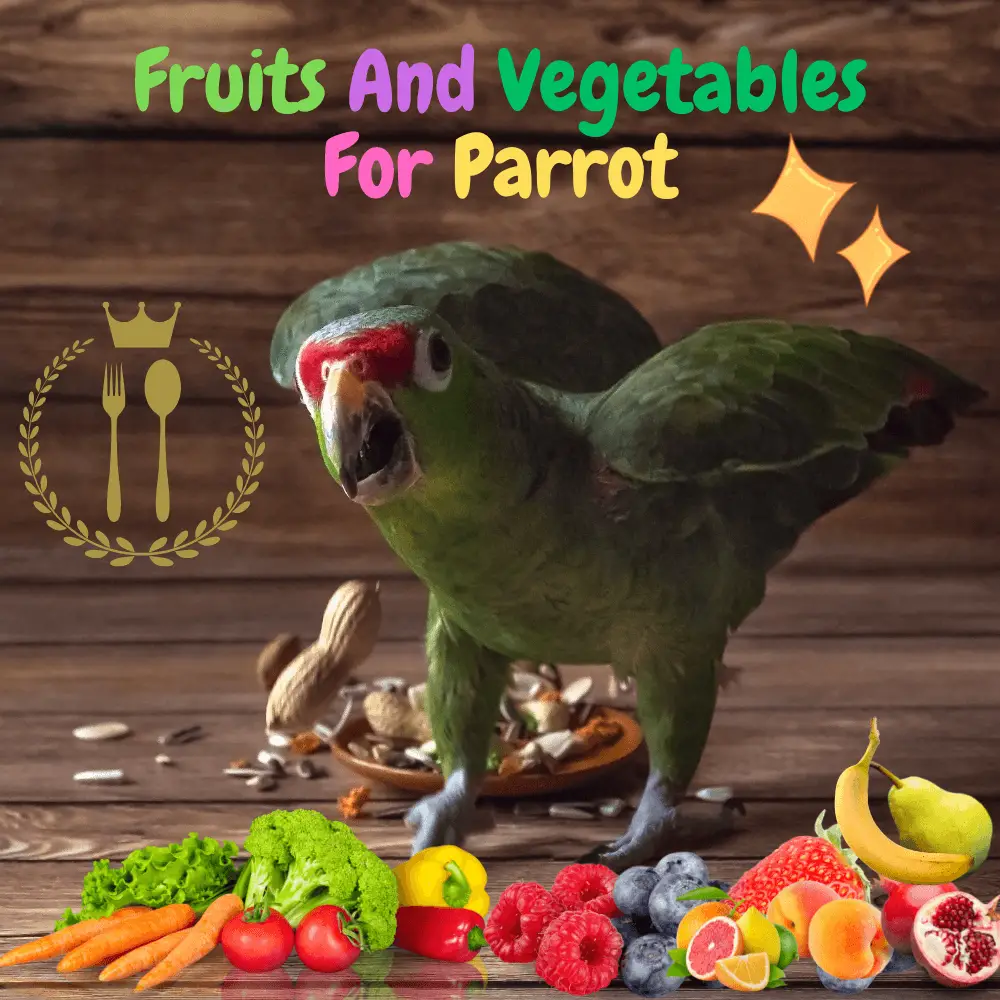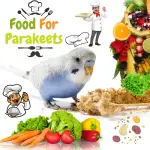
Does my parrot need fruits and vegetables? Parrots should eat fruits and vegetables for the same reasons as humans, for better nutrition. Real foods are also good for variety and add interest to the diet, which is important for the mental health of the parrot.
Are seeds enough for a parrot?
Fresh food is especially important for parrots on a seed-based diet because it provides nutrients that the seeds lack.
Are pellets nutritious enough for a parrot?
Birds that follow a pellet diet should also have products because vitamins and minerals from real food are more easily used by the body. There is also concern that an excess of pellets could lead to kidney problems in some parrots (especially the small ones, such as cockatiels), so fruits and vegetables help balance things out.
Which fruits and vegetables are safe for parrots?
As many parrots owners know, not everything that is safe for humans is safe for our feathered friends, and this also applies to table food. What fruits and vegetables are safe to offer?
Fruits and vegetables to feed a parrot:
- Romaine lettuce, collard greens, watercress, spinach, carrots, carrot tops, sweet potatoes (cooked), broccoli, peas, green beans, pumpkin, zucchini, peppers, corn, apples, mangoes, papayas, pineapples, bananas, blueberries and raspberries are all good. (The list is by no means exhaustive, but I have tried to include the most common fruits and vegetables that are safe for parrots. If in doubt, consult your avian veterinarian).
- Celery is good occasionally, but its water content is too high for it to provide a lot of nutrients.
- Also keep in mind that spinach is rich in oxalates, which can interfere with calcium absorption, so it should not be served every day.
What fruits and vegetables are NOT good for a parrot:
- Fruits and vegetables to avoid are avocado, onion, mushrooms, and tomato leaves (the fruit is good).
- Also avoid fruit seeds and pits, as they may contain small amounts of cyanide.
- Canned vegetables are usually high in sodium and therefore not the best choice. If you use canned goods, be sure to rinse vegetables thoroughly before offering them to your parrot.
- Frozen vegetables are generally suitable for parrots, but be sure to read the label carefully and avoid brands with added salt.
- Soft or moldy foods should also be avoided. If you leave fruits and vegetables in your bird’s cage, remove them after about an hour to prevent them from spoiling.
How do I get my parrot to eat fruits and vegetables?
For many parrot parents, the hardest part is getting the parrot to eating vegetables and fruits. Some people are lucky enough to have parrots that eat whatever is put in their bowl, but parrots are understandably wary of novelties, and some may not recognize fruits and vegetables as food (my cockatiel, Buzzy, whistled and ran away the first time I offered him a piece of carrot). It may take patience, perseverance, and creativity for your parrot to eat vegetables, especially if they are older and fixated on their habits, but it can usually be done.
The following methods have been recommended by my avian veterinarian, and I have had some success using them with my own picky parrot.
Eat pieces of food in front of your parrot, so it knows it’s safe to eat. Make a whole dish of the quality of the food and he might become curious enough to take a bite.
If your bird is already eating treats in the palm of your hand, try offering it a piece of vegetable from your hand instead of putting it in a bowl. Your bird may think it’s a treat and try it. He can spit it out, but the hardest part is usually getting him to taste it. If he likes it, you’re ready (at least for that particular vegetable).
Most birds love the taste of corn, and it allows them to get used to the texture of fruits and vegetables, which could be a good vegetable to start with. Just be sure to use organic corn to minimize your bird’s exposure to GMOs and pesticides.
Broccoli and peas are also good “starter vegetables”. Peas are seeds, which most birds love, and many of them enjoy separating the heads of broccoli.
In general, fresh food is best, but if your bird is resistant to raw produce, you can try cooking it. Better cooked vegetables than no vegetables at all! Some foods, like sweet potatoes, need to be cooked anyway before being offered, and others, like carrots, have more antioxidants after being cooked.
Try to cut the food into different sizes. Some birds prefer large pieces, others small ones. My Buzzy prefers his pureed vegetables and fruits like baby food.
Sprinkle pieces of food your parrot likes on vegetables or fruits. I often have to bribe Buzzy with millet to eat his vegetables or mix the puree with his cooked grains.
If your parrot likes bird bread, you can add pureed or finely chopped vegetables to the dough before baking. Sweet potatoes are perfect for this.
It can take several months for your parrot to accept new food, so don’t give up and continue to offer a form of fruit and/or vegetable almost every day (it’s best to do it every day). Good luck!
Questions and Answers
Question: How long should I leave vegetables and fruits for my house bird? My budgies will only eat them if they are outside for a while so that they get used to them.
Answer: Most fresh fruits and vegetables should be removed from the cage within about an hour. If your birds don’t eat them within this time, you can try freeze-dried fruits and vegetables instead, as they can stay in the cage all day. Look for those that don’t contain added sugar or preservatives. Karen’s Naturals is a good brand, and many online bird stores offer their own versions.
How to Make Your Parrot Eat Fruits & Vegetables
SOURCE: Salvador Budgie




















